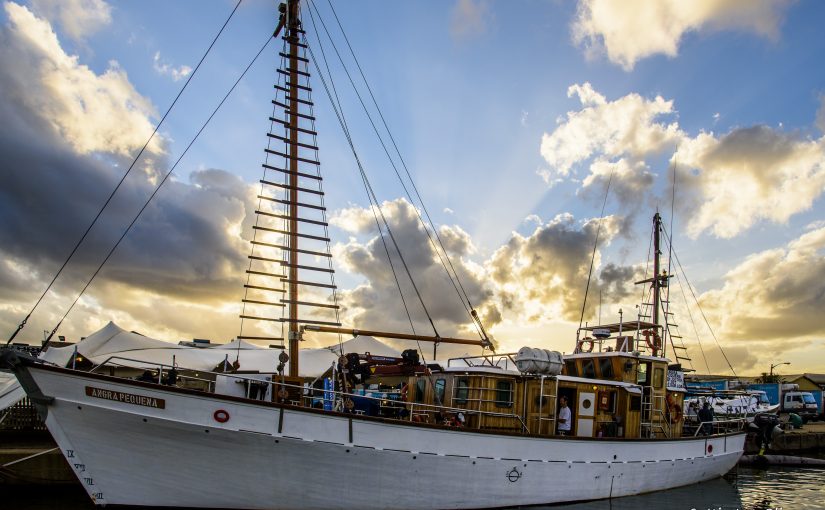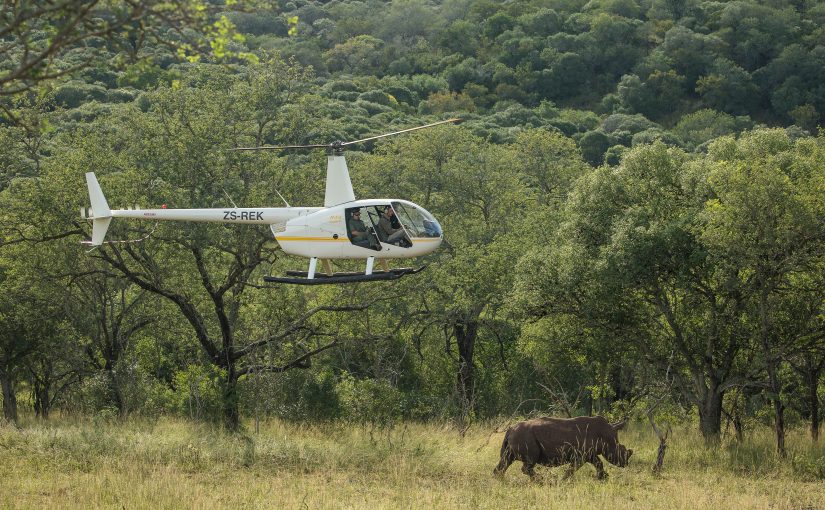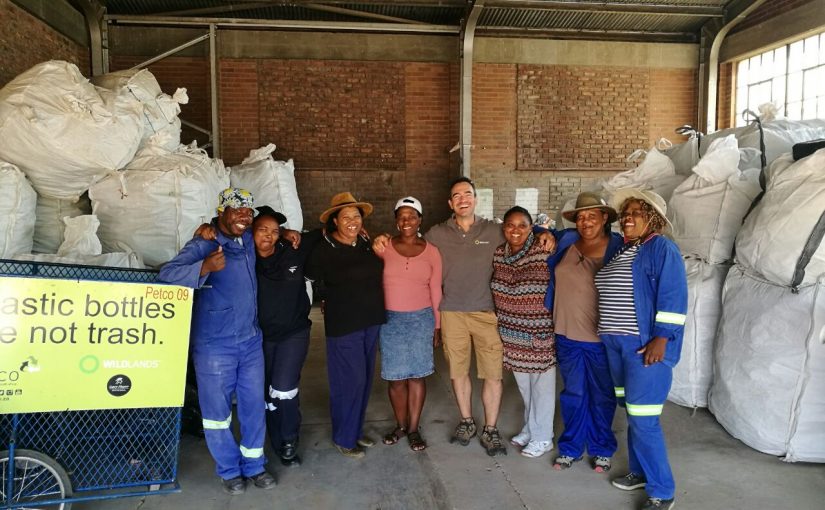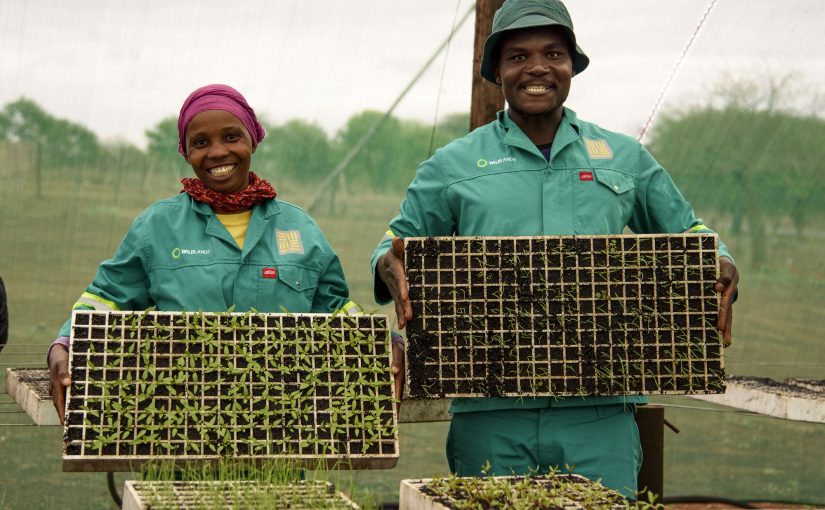The WILDOCEANS’ Research Vessel Angra Pequena is all set to begin an exciting expedition (Canyon Connections) and the filming of the ‘Our Oceans’ Series in Sodwana this week.
WILDTRUST, a leading environmental NPO and Off The Fence, a world class production company crossed paths at NEWF 2017 (Nature, Environment and Wildlife Filmmakers Congress) an on-screen romance ensued, and the partnership has since birthed a documentary series called ‘Our Oceans.’
It is recognized that we know very little about our marine ecosystems, and that these systems are under severe pressure from unsustainable fishing, mining exploration and mineral extraction, and climate change. The impact of climate change is particularly noticeable, through ocean warming, acidification and sea-level rise. There is little doubt that humankind’s relationship with the marine world is rapidly changing.
WILDTRUST – through its WILDOCEANS Program, is working closely with local, National and Provincial government to improve our knowledge of our South African marine systems and to develop the capacity of a new generation of marine scientists, managers and policy makers. Support from the African Coelacanth Ecosystem Program (ACEP) funded by the National Research Foundation of the Department of Science and Technologies (DST), has enabled a series of marine expeditions exploring the Indian Ocean off KwaZulu-Natal. These expeditions will be led by a collective of South Africa’s top marine scientists and will also include a cadre of WILDOCEANS’ Ocean Stewards, students drawn from Universities across the country that will have the opportunity to participate in these expeditions. The expeditions will use the Research Vessel Angra Pequena, a 72ft vessel that can accommodate 16 at sea for 4 weeks.
The ‘Our Oceans’ marine documentary series will profile these expeditions, raising awareness and knowledge about KwaZulu-Natal’s spectacular marine ecosystems, charismatic animals and the learning journey of the scientists and Ocean Stewards on-board the RV Angra Pequena.
The first episode, Our Oceans: Dinosaurs in the Deep, will be filmed over the next 2 weeks in Sodwana and will profile the elusive coelacanth. 79 years ago, scientists made a discovery that would capture the imagination of the world. A coelacanth, thought to have been extinct for 65 million years, was pulled out of the ocean on South Africa’s east coast. Since then, the thirst for knowledge about these fascinating fish has driven men to risk their lives diving to the blackout depths they inhabit. With only 32 individuals known to exist in South Africa in the deep canyons of iSimangaliso, the crew of the RV Angra Pequena set sail for dark underwater canyons, 100 miles off shore, where they hope to find number 33 and establish a long-term monitoring project. Nobody has ever captured a juvenile coelacanth on camera either and this passionate team hope to make history by doing so within the next two weeks.
The crew will deploy a Remote Operating Vehicle (ROV) to search for the coelacanth in places where they are known to exist, as well as at other canyons where the caves and habitat suggest they should be. A Baited Remote Underwater Vehicle (BRUV) will also be deployed to document these systems and the incredible diversity that characterizes them, from colourful coral gardens where endangered sea turtles find refuge, to rocky pinnacles teeming with life. This transect will effectively demonstrate the change in systems with depth and pressure, culminating in the canyon habitat which the coelacanth are known to inhabit.
ACEP a research platform which provides access to research infrastructure (e.g. ship time, coastal craft, remote operated vehicles, etc.) will provide the equipment and associated funding to undertake this hugely valuable research along the east coast of South Africa.
“My journey with the coelacanth actually started when I was 13 years old and I read, and was inspired by, the book ‘Old Fourlegs’ by JLB Smith. The coelacanth is now a natural emblem which we have built a research programme around,” commented Angus Paterson, Managing Director at the South African Institute for Aquatic Biodiversity (SAIAB). “We are proud to have been involved in the research around cataloguing the 32 known individuals (of coelacanth) and are excited about the potential of finding others in the canyons off Sodwana on this cruise.”
If the team finds the 33rd South African coelacanth its unique markings will be documented and this information will contribute to a vital database for the conservation of the species and its habitat. High definition 3D visuals of the canyons will be used to explore incisions and caves at the depths the fish inhabit.
Providing additional substance to the story will be the inclusion of Nelisiwe Manukuza on the expedition. Nelisiwe is an Ocean Steward who grew up in a rural community living along the coast line of Sodwana Bay, adjacent to the site where the coelacanth were discovered. The crew will spend time with Nelisiwe in her community, chatting to her family and friends and finding out how they feel about her working on the ocean and becoming a marine scientist one day.
WILDOCEANS’ Executive Director Dr Jean Harris commented, “We are very excited about doing this work in the iSimangaliso Wetland Park, a World Heritage Site. We are looking forward to understanding more about the canyon ecosystem that the coelacanth inhabits. We suspect that the deep canyons that incise our continental shelf all along the east coast are important productive features in the ocean landscape and deserve special attention.”
Our Oceans: Dinosaurs in the Deep will be shot and edited by Off The Fence, an independent production company producing outstanding non-fiction programming for the international market from their network of global offices. Charlie Luckock (Off The Fence and Director of the ‘Our Oceans’ Series) said: “I am incredibly excited to be collaborating with the WILDTRUST on a brand new documentary series showcasing South Africa’s underwater worlds. The aim of the series is to encourage the protection of our oceans by highlighting what could be lost. I hope we can inspire a generation to fall in love with their natural surroundings again and ultimately, help protect them.”






